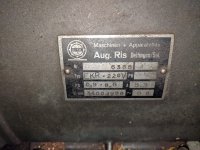cyanidekid
Titanium
- Joined
- Jun 4, 2016
- Location
- Brooklyn NYC
I lived in an apartment that had ONE 15A circuit fed by a single 14GA cloth and black rubber wire pair from the fusebox in the basement 5 floors down.
Hells Kitchen in the 1980s, that was loads of fun. if you touched the 80 Year old wire, the insulation cracked like caramel on a cold day.
Hells Kitchen in the 1980s, that was loads of fun. if you touched the 80 Year old wire, the insulation cracked like caramel on a cold day.





